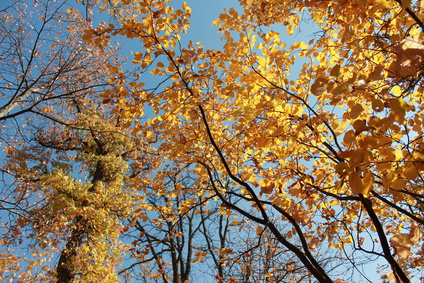Aspen Tree

Everything you need to know about the aspen tree, starting with tips on how to identify it through to typical characteristics; how to spot typical disease and pests and the best way to maintain a rowan tree.
The aspen tree is a fast-growing UK native deciduous tree which grows abundantly throughout Europe, Africa and Asia.
Aspen is a particularly striking, eye-catching tree with leaves that shimmer and appear to ‘tremble’ in the breeze due to their flat stems. Its Latin name, Populus tremula, literally translated means ‘trembling poplar’ and the tree is also known as the ‘quaking aspen’.
This tree grows commonly in parks and gardens and is a popular woodland specimen where it is a valuable habitat for wildlife and insects including the endangered Aspen Hoverfly.
General Facts
| Known as | Aspen |
| Latin name | Populus tremula |
| Location | UK native, Europe; Africa; Asia |
| Foliage | Deciduous |
| Lifespan | Up to 150 years |
Characteristics
| Height | Up to 25 metres |
| Spread | More than 8 metres |
| Appearance | A large deciduous tree with a broad crown. When mature, the trunk often becomes covered in lichen and the higher branches tend to bow horizontally. |
| Leaves | In autumn, aspen leaves turn from their springtime bronze hue into a rich, golden yellow. Leaves are rounded and appear to tremble in the breeze. |
| Flowers | Male aspen trees bear woolly grey catkins and female trees bear green catkins. |
| Fruit | Female catkins ripen to release small, fluffy seeds during the summer. |
| Found in | Parks, gardens and ancient woodland and heathland |
Conditions
| Ideal soil | Moist but well drained chalk, clay, sand or loam |
| Soil pH | Acid, alkaline, neutral |
| Aspect | North, south, east or west facing |
| Exposure | Full sun (shade intolerant); sheltered or exposed |
Threats
| Pests | Leaf beetles, sawflies, caterpillars |
| Diseases | Bacterial canker, leaf rust, poplar scab, honey fungus, silver leaf disease |
Aspen Trees and Wildlife
The aspen hoverfly and gall midges are attracted to dead aspen wood. In turn, these insects a healthy diet for birds and ladybirds. Birds such as the woodpecker nest in deadwood cavities and beavers are particularly partial to the aspen.
Aspen Tree Symbolism and History
The Greek name for aspen, Aspis, means ‘shield’ which was one of the various traditional uses of its timber. It is said that an aspen leaf crown will give the wearer the power to visit and return safely from the underworld.
The Importance of Aspen Trees
Aspen wood being naturally lightweight is commonly used to make paddles, oars and surgical splints.
Caring for an Aspen Tree
The aspen tree benefits from regular shaping to maintain its appearance. It is also important to remove damaged, diseased, congested or crossing shoots in order to keep the tree healthy and again, boost its appearance. Shaping is best carried out during the winter whilst the tree is in its dormant phase, otherwise sap bleeding can lead to disease. Dangerous branches can be removed at any time of year.
Because the aspen tree produces suckers fairly vigorously which are prone to growing into new plants which then compete with the main tree for water, nutrients and light, it is important to ensure these are removed. This should be done in such a way that the regrowth is reduced. Suckers left to grow out of control can result in the tree having to be cut down. Sucker removal is best done during the late autumn or winter.
Always engage a qualified tree surgeon. They will provide you with tailored pruning advice based on your individual tree, its condition and its surroundings.
For more about Aspen tree pruning, follow this link.
If you have an aspen tree that needs expert care and attention, why not contact Tree Works? As fully qualified and highly experienced tree surgeons, we can offer detailed skill and knowledge across all aspects of aspen tree care. For a free, no-obligation quotation, call us on 07781 416 354 or get in touch here.

